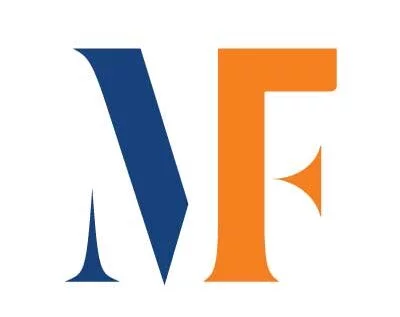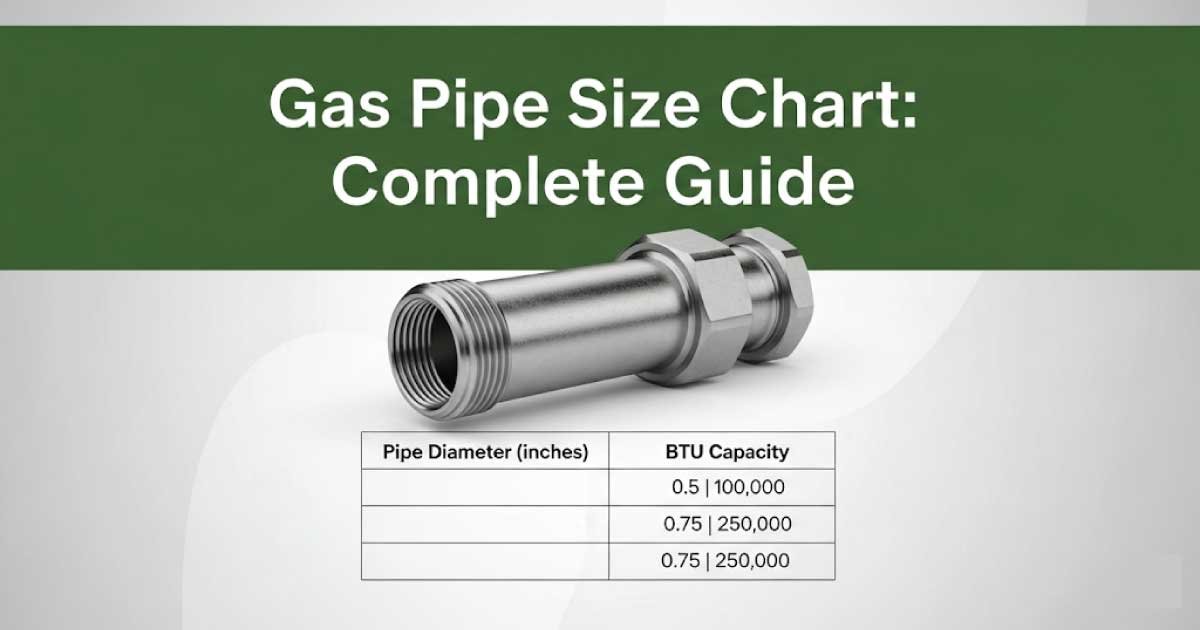When it comes to gas piping, size matters more than you might think. Whether you are installing a new natural gas line for your home appliances, setting up a propane system for outdoor equipment, or working on a commercial pipeline, choosing the correct pipe size is critical. An undersized pipe can lead to low pressure, poor appliance performance, and safety hazards, while oversized pipes can add unnecessary cost.
In this guide, we will break down the essentials of gas pipe sizing, look at common charts, and explain how to use them correctly. By the end, you’ll understand how to select the right pipe for your project with confidence.
Why Gas Pipe Sizing Is Important
Gas pipe sizing isn’t just a technical detail—it directly affects performance and safety.
Safety – Incorrect pipe sizing can cause leaks, pressure drops, or even dangerous malfunctions.
Efficiency – Appliances such as furnaces, stoves, and water heaters require a specific gas flow to operate efficiently.
Cost savings – Oversizing may waste money on larger pipes than necessary, while undersizing can lead to costly repairs later.
Compliance – Building codes and gas installation standards require adherence to proper pipe sizing methods.
Factors That Affect Gas Pipe Sizing
Before we jump into the gas pipe size chart, it’s important to understand what influences the size you need:
Type of Gas
Natural Gas (NG) and Liquefied Petroleum Gas (LPG or propane) have different densities and flow requirements.
Gas Pressure
Most residential systems use low pressure (around 0.3 psi). Higher pressures are used in industrial setups.
Total BTU Load
Add up the BTU ratings of all appliances connected to the system. This total determines the gas volume required.
Length of Pipe
The longer the run, the larger the pipe required due to pressure drop.
Material of Pipe
Common materials include steel (black iron), copper (not always allowed for natural gas), and CSST (corrugated stainless steel tubing). Each material has slightly different flow capacities.
Common Gas Pipe Materials
| Pipe Material | Typical Use | Notes |
|---|---|---|
| Black Iron | Residential and commercial gas lines | Durable, most commonly used for natural gas. |
| Copper | Sometimes used for propane | Not always allowed for natural gas; check local codes. |
| CSST (Corrugated Stainless Steel Tubing) | Flexible installations | Easier to install but more expensive. |
| Polyethylene (PE) | Underground gas lines | Used outdoors for natural gas distribution. |
Gas Pipe Size Chart (Natural Gas, Low Pressure)
The following chart is a general reference for natural gas piping at 0.3 psi (7–14 inches water column pressure) with a pressure drop of 0.3 in. WC. This is commonly used in residential systems.
Natural Gas Pipe Sizing (Black Iron Pipe)
| Pipe Size (inches) | Length of Pipe (ft) | Capacity (BTU/hr) |
|---|---|---|
| 1/2″ | 10 ft | 175,000 |
| 1/2″ | 40 ft | 92,000 |
| 1/2″ | 100 ft | 64,000 |
| 3/4″ | 10 ft | 360,000 |
| 3/4″ | 40 ft | 190,000 |
| 3/4″ | 100 ft | 130,000 |
| 1″ | 10 ft | 680,000 |
| 1″ | 40 ft | 350,000 |
| 1″ | 100 ft | 250,000 |
| 1 1/4″ | 10 ft | 1,400,000 |
| 1 1/4″ | 40 ft | 730,000 |
| 1 1/4″ | 100 ft | 500,000 |
💡 How to use this chart:
Calculate the total BTU load of your appliances.
Find the pipe length needed.
Select the pipe size that can carry at least the required BTUs.
Gas Pipe Size Charts PDF:
Download this detailed Gas Pipe Size Charts PDF for quick reference. It includes natural gas and propane sizing tables, BTU capacities, and appliance requirements to ensure safe and efficient gas line installations. Perfect for homeowners, contractors, and engineers, this guide helps you choose the correct pipe size and avoid costly mistakes.
Example Calculation
Let’s say you have the following appliances:
Gas stove: 65,000 BTU
Water heater: 40,000 BTU
Furnace: 100,000 BTU
Total Load = 205,000 BTU
If the farthest appliance is 50 feet away, looking at the chart:
A 3/4″ pipe at 50 ft handles about 170,000 BTU → too small.
A 1″ pipe at 50 ft handles about 320,000 BTU → sufficient.
So, you would need a 1-inch gas line to safely supply these appliances.
Propane Gas Pipe Size Chart
Propane is denser than natural gas, so the pipe sizing is slightly different. Below is a reference chart for propane gas at 11 inches water column pressure.
| Pipe Size (inches) | Length of Pipe (ft) | Capacity (BTU/hr) |
|---|---|---|
| 1/2″ | 10 ft | 131,000 |
| 1/2″ | 40 ft | 75,000 |
| 1/2″ | 100 ft | 45,000 |
| 3/4″ | 10 ft | 278,000 |
| 3/4″ | 40 ft | 151,000 |
| 3/4″ | 100 ft | 93,000 |
| 1″ | 10 ft | 520,000 |
| 1″ | 40 ft | 285,000 |
| 1″ | 100 ft | 175,000 |
BTU Requirements of Common Appliances
To properly size your gas pipe, you need to know how many BTUs your appliances require.
| Appliance | Typical BTU/hr |
|---|---|
| Gas range (4 burners + oven) | 65,000 – 80,000 |
| Tankless water heater | 120,000 – 200,000 |
| Standard water heater | 30,000 – 50,000 |
| Furnace (residential) | 80,000 – 150,000 |
| Clothes dryer | 35,000 |
| Fireplace | 30,000 – 60,000 |
| Outdoor grill | 40,000 – 60,000 |
Tips for Correct Gas Pipe Sizing
Always add all appliance loads before sizing.
Use the longest run method: measure the distance to the farthest appliance and use that for calculations.
Check local codes—they may have specific requirements.
If in doubt, go one size larger to ensure adequate flow.
Consider future appliances—if you may add a heater or stove later, size accordingly.
Read Our Latest Guide: Hose Size Chart: Complete Guide
Common Mistakes to Avoid
Undersizing the pipe – leads to appliance malfunctions.
Ignoring pressure drop – longer pipes reduce flow significantly.
Mixing gas types – propane and natural gas require different sizing.
Not checking codes – some regions prohibit copper or flexible hoses.
Oversizing too much – unnecessary costs for larger pipes.
Conclusion
Choosing the right gas pipe size is essential for safety, efficiency, and compliance with building codes. By understanding BTU loads, pipe length, and gas type, you can use the gas pipe size chart to select the correct pipe for your system. Always consult local regulations and, when in doubt, work with a licensed professional for installation.
A properly sized gas line ensures your appliances work efficiently, saves money in the long run, and keeps your home safe.
Read Our Latest Guide: Metric Drill and Tap Chart: A Complete Guide
FAQs:
What size gas pipe do I need for a stove?
Most residential stoves require 65,000–80,000 BTU/hr. A 1/2-inch gas pipe up to 20 feet is usually sufficient. If the run is longer than 30 feet, upgrade to 3/4 inch to maintain proper pressure. Always check your stove’s BTU rating and local codes before finalizing pipe size.
How do you calculate gas pipe size?
Gas pipe size is calculated by considering total BTU load, pipe length, gas type (natural or propane), and pressure drop. Add all connected appliances’ BTUs, find the longest pipe run, and then select the pipe size from a gas pipe size chart that can handle that load safely.
Can you oversize a gas pipe?
Yes, but oversizing a gas pipe isn’t usually necessary. While larger pipes don’t harm appliance performance, they increase installation costs and may be harder to work with. Codes require minimum pipe sizes, but slightly oversizing for future appliance expansion can be beneficial. Always balance cost and efficiency when choosing.
What size gas pipe do I need for a water heater?
A standard tank-style water heater usually requires 30,000–50,000 BTU/hr, while a tankless unit may need 120,000–200,000 BTU/hr. For tank models within 20–30 feet, a 1/2-inch pipe is fine. For tankless heaters, you may need 3/4 inch or even 1 inch, depending on the distance and load.
Does pipe length affect gas pressure?
Yes. The longer the gas pipe, the more friction loss occurs, reducing pressure. That’s why pipe charts list BTU capacity by length. For example, a 1/2-inch pipe may supply 175,000 BTU at 10 feet, but only 64,000 BTU at 100 feet. Always size pipes based on the longest run.
Can propane and natural gas use the same pipe size chart?
No. Propane and natural gas require separate charts because their densities and pressures differ. Propane delivers more energy per cubic foot, so its pipe sizing is different. Always use the chart designed for the gas type you’re installing. Mixing them can lead to undersizing, poor appliance performance, or safety issues.

